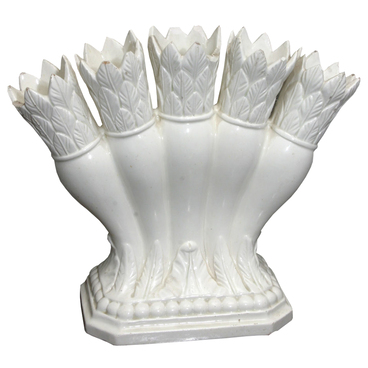The pendant belonged to Anton Delvig (1798-1831), a poet, publisher of the ‘Literaturnaya Gazeta’ (‘Literary Newspaper’), schoolmate of Alexander Pushkin’s. Evgeniy Boratynskiy met him in 1818 in Petersburg, and soon he became one of the closest friends of the poet’s youth. It was Delvig who supported young Boratynskiy in his first experiments in poetry and published them.
The pendant from the museum’s collection is attached to a pocket watch chain or to a bracelet. This type of decoration was very popular in the first half of the 19th century and served as a mandatory feature of a fashionable man costume.
Often, such pendants were bizarre shaped and decorated with ivory, enamel, and precious stones. It was one of the things that reported the owner’s status or his belonging to high class. An ability to clink elegantly with a pendant was an integral part of a genteel skill set.
A real dandy had up to ten different pendants at their disposal. They were worn on a short chain hanging from the pocket of a vest, or on a long chain that was worn on the neck. Sometimes the chains were replaced by beaded and silk laces or colored ribbons. The type of the chain, the number of pendants on it -- all such nuances had significance.
Anton Delvig’s pendant was made in Geneva in the workshop of jeweler A. Glatou. This is known from the inscription inside the case. In all likelihood, the decoration was a romantic gift to the poet from his wife Sofya (1806-1888). They were married in 1825 and made a strange impression on their contemporaries. The phlegmatic “sloth” Delvig did not seem to be a match for the enthusiastic, eccentric Sofia.
However, these circumstances did not prevent the house of the Delvigs from becoming a meeting place for Pushkin, Boratynskiy, Pletnev, Gnedić, Odoyevsky, Venevitinov and many other 19th-century poets and writers.
The pendant from the museum’s collection is attached to a pocket watch chain or to a bracelet. This type of decoration was very popular in the first half of the 19th century and served as a mandatory feature of a fashionable man costume.
Often, such pendants were bizarre shaped and decorated with ivory, enamel, and precious stones. It was one of the things that reported the owner’s status or his belonging to high class. An ability to clink elegantly with a pendant was an integral part of a genteel skill set.
A real dandy had up to ten different pendants at their disposal. They were worn on a short chain hanging from the pocket of a vest, or on a long chain that was worn on the neck. Sometimes the chains were replaced by beaded and silk laces or colored ribbons. The type of the chain, the number of pendants on it -- all such nuances had significance.
Anton Delvig’s pendant was made in Geneva in the workshop of jeweler A. Glatou. This is known from the inscription inside the case. In all likelihood, the decoration was a romantic gift to the poet from his wife Sofya (1806-1888). They were married in 1825 and made a strange impression on their contemporaries. The phlegmatic “sloth” Delvig did not seem to be a match for the enthusiastic, eccentric Sofia.
However, these circumstances did not prevent the house of the Delvigs from becoming a meeting place for Pushkin, Boratynskiy, Pletnev, Gnedić, Odoyevsky, Venevitinov and many other 19th-century poets and writers.
The first medallion of Devig’s pendant depicts two swans, a symbol of conjugal love and fidelity. The phrase ‘Droit au cœur’ -- ‘Right to the heart’ -- is engraved on the rim of the second medallion. The third medallion concludes the plot: the same swans are depicted here, but with two small swans. The fourth medallion depicts two angels supporting the monogram with initials ‘AD’ - Anton Delvig. The pendant became a part of the museum collection thanks to Sofia. After Delvig’s sudden death in 1831, she married Sergey Boratynskiy, the poet’s brother.


